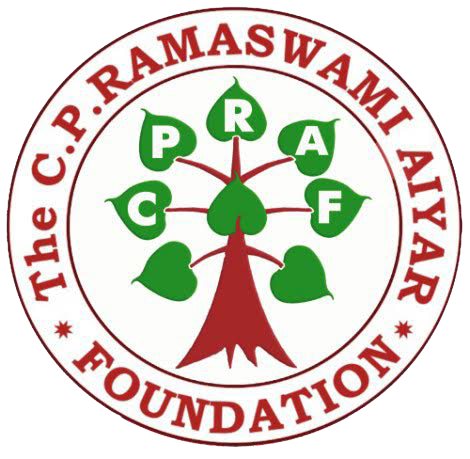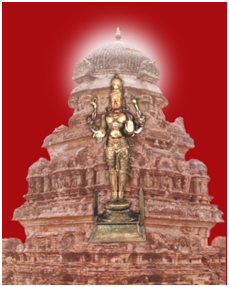


HERITAGE CONSERVATION
| INTER SCHOOL SANSKRIT DRAMA COMPETITION |
|---|
In October 1993, the C.P. Ramaswami Aiyar Foundation conducted the first Inter-School Sanskrit Drama competition. Although the number of schools that participated was limited, the quality and the excellence of both the level of Sanskrit and the children’s acting ability has prompted us to organise the inter-school Sanskrit drama competition as an annual feature on the birth anniversary of Dr. C.P. Ramaswami Aiyar.
Students from various famous schools of Chennai take part in the Sanskrit Drama and prizes will be distributed for the best play, best actor, best pronunciation of Sanskrit, etc.
The Twenty Third Inter-School Sanskrit Drama Competition was on November 7, 2015. The theme was Kalidasa’s plays.
The topics and the Prize Winners for the Best Play for the last 11 years were
| Year | Theme | The Prize Winners for the Best Play |
|---|---|---|
| 2015 | Kalidasa | The Grove School, Chennai |
| 2014 | Dashavataram | Padma Seshadri Bala Bhavan Senior Secondary School, T. Nagar, Chennai |
| 2013 | Great Indians | Padma Seshadri Bala Bhavan Senior Secondary School, T. Nagar, Chennai |
| 2012 | Valmiki Ramayana | The Grove School, Chennai |
| 2011 | Down with Corruption | Padma Seshadri Bala Bhavan Senior Secondary School, T. Nagar, Chennai |
| 2010 | Any theme | Padma Seshadri Bala Bhavan Senior Secondary School, T. Nagar, Chennai |
| 2009 | Any theme | Padma Seshadri Bala Bhavan Senior Secondary School, K.K. Nagar, Chennai |
| 2008 | Unity in Diversity | Padma Seshadri Bala Bhavan Senior Secondary School, Nungambakkam, Chennai |
| 2007 | Celebrating Diversity | Padma Seshadri Bala Bhavan Senior Secondary School, T. Nagar, Chennai |
| 2006 | Education – The Right of every Child | Padma Seshadri Bala Bhavan Senior Secondary School, T. Nagar, Chennai |
| 2005 | Nature – Friend not Foe | P.S. Senior Secondary School, Chennai |
TEMPLE OF VARAHISHWARAR IN DAMAL, KANCHIPURAM

Damal Village is 10 kilometres due west of Kanchipuram and is a part of the ancient kingdom of Tondaimandalam. It is a small and insignificant village in a large state and a larger nation. But it has contributed greatly to the protection of Tamil Nadu from northern and foreign invaders, taking the brunt of many a battle. In the last few centuries, it has been the guardian angel of the ancient city of Kanchi.
The Shiva Linga of Damal represents Varahishwarar or Lord of Varaha and the presiding deity of the temple that dominates the landscape. The wonder of the temple is that on Rathasaptami day, in the Tamil month of Masi (February-March), the sun’s rays fall directly on the Shiva Linga.
The Varahishwarar temple is the oldest known shrine of Damal. The 7th century Pallava elements in the adishthana portion of the mahamandapa and other damaged sculptures of Nandivarman III Pallava date it back to at least the Pallava period. However, it probably goes back to even pre-Pallava times, when the temple and the Shiva Linga would have been made out of perishable materials (like clay or wood). The temple bore the brunt of the many wars of the medieval and modern periods of South Indian history. For the temple is situated to the west of the village, at its entrance, an easy target for invaders and looters.
The temple also has some interesting sculptures of various forms of Shiva, as well as carvings of incidents of great Indian epic, the Ramayana, on the pillars in the inner and outer verandahs and has 16 sculptures of Bhairava with the dog. Earlier, there were some unique pieces of the Pallava, Chola and Vijayanagara periods. These are now either dilapidated or lost to vandals and neglect.
As a part of our efforts to clean and green the village, children from the Saraswathi Kendra Learning Centre for Children, another offspring of the Foundation, went to Damal in 1991 to clean the Varahishwarar Temple along with the students of the Damal Government School. Our chemist, the late N. Muthukrishnan, took up the chemical cleaning of the gopuram and the vimana. Then the villagers asked the Foundation to arrange for the renovation of the temple. We were not for – and continue to be against – a “renovation”, as we felt that this temple, with its Pallava, Chola and Vijayanagara features, deserved to be retained in its original form.
The Foundation then advertised on behalf of the Hindu Religious and Charitable Endowments (H.R. & C.E.) Board of the Government of Tamil Nadu, which had taken over the temple, calling for tenders for the renovation. It was awarded to Shri Subbiah Sthapathi, descendent of a traditional family of temple builders and sculptors of Kanchi. The Foundation then applied for and obtained a grant for the repair of the roof of the temple from the Government of Tamilnadu. The main structure, including the vimana, garba griha, the open window of the sanctum and the front gate were renovated by the Foundation, which also chemically destroyed the plants and weeds growing on the roof, the gopuram and elsewhere.The construction of three new structures – shrines for Devi, Ganesha and Kartikeya – was made possible by Their Holinesses, the Shankaracharyas of Kanchi.
During the years of our work in Damal, the Foundation photographed the temple and its carvings at various stages before and during the renovation. The late Shri. V.K. Rajamani, the well-known photographer, and Dr. P. Sudhakar, Joint Director of the C.P.R. Environmental Education Centre, took detailed photographs of the sculptures and their restoration.
SHAKUNTHALA JAGANNATHAN MUSEUM OF KANCHI
The Shakunthala Jagannathan Museum of Kanchi is unique, in that it has a collection of everyday items that belong exclusively to Kanchipuram, reflecting its ancient and exclusive culture. There are few, if any, museums in India that showcase local culture and artifacts. The Shakunthala Jagannathan Museum of Kanchi is one-of-a-kind, established in 2001.
The Museum was the brainchild of the late Shakunthala Jagannathan, former Regional Director and Deputy Director General of Tourism, Government of India, Bombay (Mumbai). Brahma Mandiram, where the Museum is situated, was her ancestral home, which was gifted by her father C.R. Pattabhi Raman to the C.P. Ramaswami Aiyar Foundation. The house itself belongs to the Vijayanagara period, the 15th-16th centuries, about 500 years old, and has been preserved to showcase a lifestyle of an age gone by, an age of spiritualism and sages, where simplicity and beauty were the hallmark of existence. The house, with its wall paintings and beautiful pillars, belonged to a family of land owners of Damal village, maternal ancestors of C.P. Ramaswami Aiyar. C.P.’s grandfather did something revolutionary in the 19thcentury: he gave the house and his other properties to his only child, a daughter, in an age when girls did not inherit property, an age when they sat behind the purdah, in zenanas, which can be seen in this building. The daughter, Rangammal, became a powerful matriarch, and has been immortalized in Rangammal Vidyalaya, the primary school established by the C.P. Ramaswami Aiyar Foundation in the adjoining part of the house. On Raja Veedhi (street), another of her homes now houses the SSKV Girls’ School.Shakunthala Jagannathan gifted her beautiful collection of antique paintings, brass utensils and lamps, musical instruments, textiles and dolls for the Museum, whose collections are based on her personal collections. Some she inherited. Some were acquired. They are a living testimony to Kanchi and its rich heritage.
The basic architecture of the house has been retained, although the rooms have been modified to display the collections. The visitor enters past the tinnai, through the first kattu and into the kalyāna koodam, where the display begins.Many of the collections belong to modern Andhra Pradesh, which was once a part of Madras Presidency, and the region was known as Chitoor – North Arcot district.